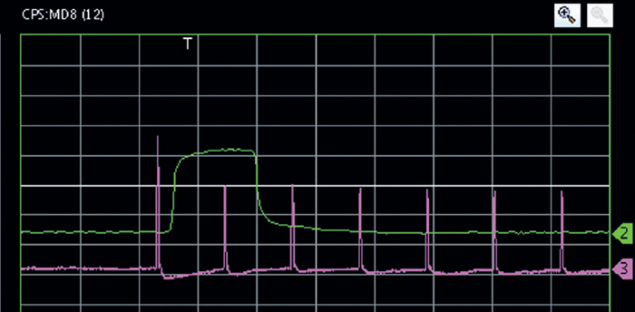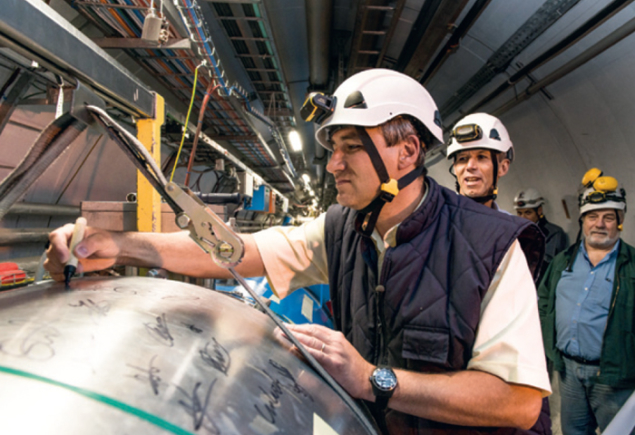
Image credit: CERN.
Beams of protons are back in CERN’s Proton Synchrotron (PS), having circulated around the accelerator on 20 June for the first time in more than 15 months. The PS restart followed on from the restart of beam in Linac 2 and then the PS Booster (PSB) on 2 June.
The beam made it into the PS on schedule, thanks to the efforts of the PSB specialist teams, who were called upon on many occasions for hardware interventions during the preceding weeks of hardware commissioning and “cold” tests. These included fixing vacuum leaks, re-configuring timing links, correcting magnet connections and, in one instance, replacing an entire magnet with a spare, owing to a water leak. Operations, radiofrequency and instrumentation teams then needed to adjust the settings for beam acceleration and extraction from the PSB to the PS. With beam back in the PS, beam commissioning tests could begin. During this final phase, all of the beam diagnostics – from beam current to bunch spacing – need to be checked, first with low-intensity beams (1011 protons) before moving to higher-intensity levels (1012 protons). The PS will then be ready to send beams to the East Area and the neutron facility, nToF, where physics is planned to start in late July. ISOLDE, the only experimental facility connected directly to the PSB, will be the first user to receive its beams, with physics set to restart in mid-July. The physics programme in the Super Proton Synchrotron is set to restart in the autumn.

Image credit: CERN-PHOTO-201406-127 – 10.
At the LHC, the teams closed the last of the 1695 outer magnet bellows on 18 June, marking the end of the Superconducting Magnets And Circuits Consolidation (SMACC) project. Leak tests on the entire machine are proceeding well, and by late June they had been completed in sector 5-6 and were under way in sector 7-8. At the same time, sector 6-7 – the first to be cooled – had reached 20 K, and will be maintained at this temperature during continuity testing of the copper stabilizer. Four sectors should be cool by the end of the summer, and all eight sectors of the LHC are scheduled to be cooled to the nominal temperature of 1.9 K in late autumn.
Beam is expected back into the LHC early in 2015, and the restart of the LHC physics programme is planned for spring 2015, with a collision energy of 13 TeV instead of the previous 7–8 TeV.







